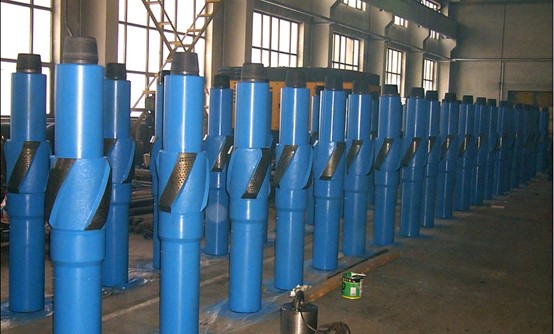The use of sleeve stabilizers is an important measure to improve the quality of cementing. The purpose of cementing is twofold: firstly, to use sleeve to seal off wellbore sections that are prone to collapse, leakage, or other complex situations, providing a guarantee for safe and smooth drilling. The second is to effectively isolate different oil and gas reservoirs, preventing oil and gas from flowing to the surface or leaking between formations, providing channels for the production of oil and gas. According to the purpose of cementing, standards for evaluating cementing quality can be derived.
The so-called good cementing quality mainly refers to the sleeve being centered in the wellbore, and the cement sheath around the sleeve effectively separating the sleeve from the wellbore wall and the formation from the formation. However, the actual drilled wellbore is not absolutely vertical and may result in varying degrees of wellbore inclination. Due to the presence of wellbore inclination, the sleeve will not naturally center inside the wellbore, resulting in varying lengths and degrees of contact with the wellbore wall. The gap between the sleeve and the wellbore varies in size, and when cement slurry passes through areas with large gaps, the original slurry is easily replaced; On the contrary, for those with small gaps, due to the high flow resistance, it is difficult for the cement slurry to replace the original mud, resulting in the commonly known phenomenon of cement slurry channeling. After the formation of channeling, the oil and gas reservoir cannot be effectively sealed, and oil and gas will flow through areas without cement rings.
Using a sleeve stabilizer is to center the sleeve as much as possible during cementing. For cementing directional or highly deviated wells, it is even more necessary to use sleeve stabilizers. The use of sleeve centralizers can not only effectively prevent cement slurry from entering the groove, but also reduce the risk of sleeve pressure difference and sticking. Because the stabilizer centers the sleeve, the sleeve will not be tightly attached to the wellbore wall. Even in well sections with good permeability, the sleeve is less likely to be stuck by mud cakes formed by pressure differentials and cause drilling jams.
The sleeve stabilizer can also reduce the bending degree of the sleeve inside the well (especially in the large wellbore section), which will reduce the wear of the drilling tool or other downhole tools on the sleeve during the drilling process after the sleeve is installed, and play a role in protecting the sleeve. Due to the support of the sleeve stabilizer on the sleeve, the contact area between the sleeve and the wellbore is reduced, which reduces the friction between the sleeve and the wellbore. This is beneficial for the sleeve to be lowered into the well and for the sleeve to be moved during cementing.
Post time: Sep-25-2024





